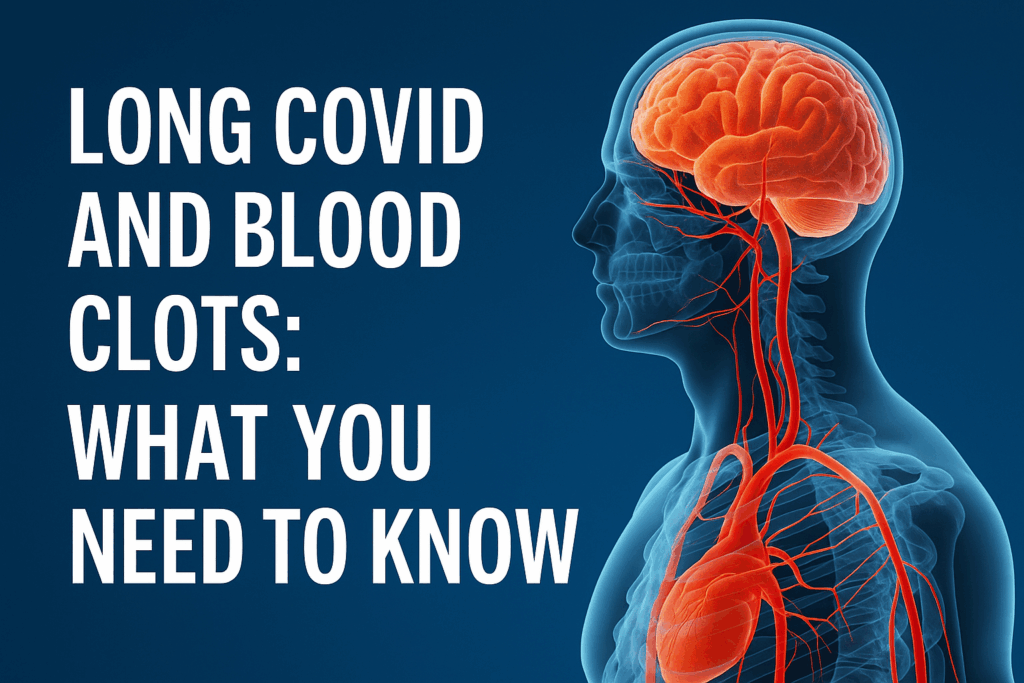When we think of COVID-19, we often recall the hallmark symptoms—fever, cough, shortness of breath. But what happens when the illness lingers far beyond the acute stage? For many people, long COVID brings a whole new set of health challenges, and one of the most concerning is the increased risk of blood clots. These aren’t minor inconveniences—blood clots can lead to serious complications like heart attacks, strokes, or pulmonary embolisms. If you or someone you care about is navigating long COVID, understanding this hidden danger could be a lifesaver.
Why Blood Clots Are a Concern in Long COVID
Blood clots were a major concern during the early waves of COVID-19, particularly for patients in intensive care. But even after the infection clears, some people continue to face clotting issues. Researchers believe the virus damages the blood vessel lining (the endothelium), creating a pro-inflammatory and pro-thrombotic environment. This may explain why some long COVID patients experience persistent fatigue, brain fog, or chest discomfort—symptoms that could be linked to restricted blood flow from microclots. It’s a stark reminder that the body may still be battling invisible damage even after testing negative.
Symptoms That May Signal a Blood Clot
One of the most dangerous things about blood clots is how quietly they can develop. If you’re dealing with long COVID, symptoms like swelling in one leg, chest tightness, shortness of breath, or even a racing heartbeat shouldn’t be brushed aside. These might signal a deep vein thrombosis (DVT) or pulmonary embolism. Some people also experience unexplained headaches or cognitive issues, which could be related to clotting in small blood vessels in the brain. Because these symptoms overlap with long COVID, it’s easy to miss the signs—so it’s important to stay vigilant.
What the Research Says
The science is beginning to catch up with what many long COVID patients have been feeling for months. A study in Cardiovascular Diabetology found microclots and impaired clot breakdown in long COVID patients. Another paper in Nature Cardiovascular Research highlighted the presence of persistent abnormalities in the fibrinolytic system, which could explain prolonged symptoms. A third study in Frontiers in Cardiovascular Medicine suggested that endothelial dysfunction and platelet activation continue well beyond recovery. These findings point toward a need for targeted therapies that address clotting and vascular health.
Who’s at Higher Risk?
Not everyone with long COVID will experience blood clots, but certain risk factors make them more likely. People with underlying conditions like diabetes, hypertension, obesity, or heart disease are at increased risk. Age is another factor—older adults are more susceptible—but surprisingly, even young, healthy individuals have reported clotting issues. Those who had severe or hospitalized cases of COVID-19 are also more vulnerable. Alarmingly, some of these clots may be microscopic, evading detection in standard scans. If you’re in a high-risk group, talk to your doctor about additional testing and preventive measures.
Managing the Risk and Staying Safe
If you’re recovering from COVID-19 and still feel “off,” don’t ignore your instincts. Blood clots are serious, but often preventable with the right steps. Consider asking your healthcare provider about checking markers like D-dimer or CRP. Some people may benefit from low-dose blood thinners, but these should only be taken under medical supervision. Meanwhile, simple daily habits—like staying hydrated, avoiding long periods of sitting, and gentle movement—can go a long way. Being informed about long COVID and blood clots means you’re better equipped to take control of your recovery journey.
References:
- Grobbelaar, L.M. et al. (2022). Persistent clotting protein pathology in Long COVID/Post-Acute Sequelae of COVID-19 (PASC) is accompanied by increased levels of antiplasmin. Cardiovascular Diabetology. https://cardiab.biomedcentral.com/articles/10.1186/s12933-022-01683-0
- Pretorius, E. et al. (2022). Persistent clotting protein pathology in Long COVID. Nature Cardiovascular Research. https://www.nature.com/articles/s44161-022-00163-5
- Fogarty, H. et al. (2022). Persistent endotheliopathy in the pathogenesis of long COVID syndrome. Frontiers in Cardiovascular Medicine. https://www.frontiersin.org/articles/10.3389/fcvm.2022.931956/full
- Townsend, L. et al. (2021). Prolonged elevation of D-dimer levels in convalescent COVID-19 patients. Journal of Thrombosis and Haemostasis. https://www.ncbi.nlm.nih.gov/pmc/articles/PMC8324884/


